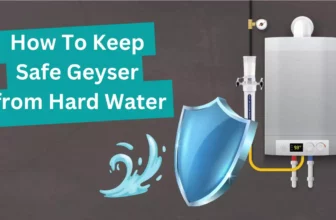In an era where energy efficiency and sustainability take center stage in our collective consciousness, the search for alternative and cost-effective solutions has never been more crucial. Among the array of innovations, one stands out as a beacon of practicality and environmental consciousness: the solar water heater. It is not only an alternative but also the best-suited appliance for water heating in areas where electricity is unreliable, during cold seasons, and even in large organizations.
As conventional energy costs continue to rise, homeowners and businesses are turning to this ingenious technology not only to cut down on their utility bills but also to embrace a cleaner and more sustainable future.
In this comprehensive guide, we will delve into the various facets of solar water heaters, often referred to as solar geysers, exploring their mechanisms, benefits, and considerations for installation. From harnessing the power of the sun to efficiently heat water for domestic and commercial use to understanding the financial implications and environmental impact, we aim to provide you with the knowledge needed to make an informed decision about incorporating this savvy alternative into your daily life.
Join us on this enlightening journey as we unravel the secrets behind solar water heaters, unlocking the potential to not only save on costly energy bills but also contribute to a greener planet.
What is a solar water heater?
A solar water heater is a thing that uses the sun to make hot water. It’s like a clever machine that helps people have warm water in their homes without using electricity like other traditional geysers or heater rods. The sun’s energy is used to heat the water, making it a simple and smart way to have hot water without spending too much money on power.
Solar Geyser vs Electric Geyser: What’s the Difference?
A solar geyser uses the power of the sun to heat water, kind of like using sunlight to make it warm. It’s like having a special water heater that runs on sunshine!
On the other hand, an electric geyser needs electricity to heat up water. It works like a regular water heater you might find at home.
So, the big difference is that one uses sunlight (solar), and the other uses electricity (electric). The solar one is good for saving energy and money, while the electric one needs more power from the electricity grid.
Solar Geyser:
Pros
Energy Savings: Uses the sun’s free energy, reducing electricity bills.
Environmentally Friendly: Reduces carbon footprint and helps the environment.
Long-term Savings: Higher upfront costs but lower operational costs over time.
Reliable in Sunlight: Works well in sunny areas, providing consistently hot water.
Cons
High Initial Cost: Installation can be expensive.
Weather Dependence: Less effective on cloudy days or during the night.
Space Requirement: Needs space for solar panels, especially for larger systems.
Electric Geyser:
Pros
Lower Initial Cost: Usually cheaper to install than their solar counterparts.
Consistent Performance: Works consistently regardless of weather conditions.
No Space Limitations: This doesn’t require additional space for solar panels.
Cons
Higher Operating Costs: This consumes more electricity, leading to higher bills.
Environmental Impact: Higher carbon footprint due to reliance on electricity.
Limited Energy Independence: Depends on the electricity grid and is subject to outages.
Three Systems of Solar Water Heater
Generally, solar water heaters are available in three major types: non-pressurized systems, pressurized systems, and commercial systems. Let’s understand this.
Non-Pressurized System: Non-pressurized solar water heaters, also known as straight-in all-glass vacuum tube systems, lack the ability to handle high pressure due to sealed vacuum collectors and tanks. Despite their non-pressurized nature, these systems boast high efficiency and long service lives. Among them, the low-pressure gravity system involves a vacuum glass tube collector, an insulated storage tank, and optional stand parts. Water is either pumped to a rooftop tank or sourced from a water tower, introducing some natural pressure. The evacuated glass tubes, filled with water and exposed to sunlight, heat the water within. While compatible with pumps for increased household water pressure, it’s essential to note that the tanks and tubes themselves remain non-pressurized.
Pressurized System: The pressurized solar water heater, also known as the phase change thermal conductivity full-pressure system, is characterized by an enclosed heating unit with copper tubes connected to a tank. It features a phase-change thermal conductivity collector with vacuum tubes, phase-change heat pipes, and aluminum wings. Designed to withstand pressure, this system allows for a closed loop with a circulation pump, ensuring a constant flow of water through the solar collectors for instant hot water at the tap.
Pressurized solar water heaters are ideal for homes with diverse bathing needs, functioning well with high water pressure for luxurious showers. These systems efficiently transfer heat to water through copper pipes, preventing scaling issues. They adapt seamlessly to areas with hard or soft water and offer versatile placement options, allowing tanks and collectors to be situated in accessible locations, even at a distance from taps. Compatibility with water pumps enhances operational convenience. The system’s temperature, starting high and gradually decreasing during use, is user-friendly. Safety features include a valve to release excess pressure and air from the tank. Despite their benefits, pressurized systems tend to be pricier than low-pressure solar heaters, and some models may require power for pump and controller operation, which can be addressed with a photovoltaic module.
Commercial System: Commercial Integrated systems, ideal for high-capacity water needs, include the 500lpd model designed for various commercial sectors. Installed in series, these systems offer direct water heating in an integrated tank, allowing easy installation in multiples of 500lpd. This setup minimizes heat loss and maximizes hot water availability. The inner tank utilizes glass-lined technology for diverse water qualities, and Cyclopentane PUF insulation ensures prolonged warmth retention. With 3 T Gold standard tubes, the system achieves higher water temperatures, supported by special features like a nozzle, heavy-duty capsule-shaped tank, and a load-bearing rolled profile section. Notably, substantial savings on commercial energy costs can be realized. The system is designed for easy installation on superstructures, with access doors for tank cleaning and a durable UV-stabilized outer cover. The 1 ½-inch inlet/outlet ensures proper water circulation.
Understanding the Solar Heater Collectors Type ETC vs FPC
If you’re curious about what a solar collector is, it’s a crucial component in a solar water geyser, responsible for gathering heat by absorbing sunlight to warm the water. There are two main types of solar collectors: Flat Plate Collectors (FPC) and Evacuated Tube Collectors (ETC).
Flat Plate Collectors (FPC): These collectors consist of a flat, dark-colored surface that absorbs sunlight. The absorbed solar energy heats a fluid (commonly a mixture of water and antifreeze) within the collector, which is then circulated to transfer heat to the water in the system. FPCs are known for their simplicity and reliability.
Evacuated Tube Collectors (ETC): ETCs, on the other hand, are composed of rows of transparent glass tubes containing an absorber tube. The air is evacuated from the space between the tubes to create a vacuum, reducing heat loss. When sunlight enters the tubes, it is absorbed by the absorber tube, heating the fluid inside. ETCs are efficient in colder climates and can capture sunlight from various angles.
Why Solar Collectors Matter:
Efficient Heat Absorption:
- Solar collectors play a vital role in harnessing solar energy efficiently. Their ability to absorb sunlight and convert it into heat is instrumental in the functionality of solar water heaters.
Variety in Design:
- The two types, FPC and ETC, offer flexibility in design, allowing users to choose the collector type that best suits their climate, energy needs, and installation preferences.
Contributing to Sustainability:
- By relying on solar collectors, solar water heaters contribute to sustainable energy practices, reducing dependence on conventional energy sources and minimizing environmental impact.
Let’s understand FPC and ETC from this simple comparison table!
| Aspect | Evacuated Tube Collector (ETC) | Flat Plate Collector (FPC) |
|---|---|---|
| Design | Rows of transparent glass tubes with absorber tubes | Flat, dark-colored surface |
| Efficiency | Efficient in colder climates, captures sunlight from various angles | Simple and reliable design |
| Heat Loss | Low heat loss due to the vacuum between tubes | Slightly higher heat loss due to less insulation |
| Temperature Range | Operates well in colder climates | Suitable for moderate to high-temperature applications |
| Cost | Generally costlier compared to FPC | Often more cost-effective than ETC |
| Installation Flexibility | Flexible installation options due to tube design | May have fewer installation options due to flat design |
| Maintenance | Relatively lower maintenance requirements | Simple maintenance with occasional cleaning |
| Durability | Durable design with minimal vulnerability to weather conditions | Robust and durable, suitable for various climates |
| Space Efficiency | Compact design, suitable for limited roof space | Requires more roof space but can be integrated into roof structure |
| Performance in Cloudy Weather | Better performance in overcast conditions | Slightly reduced efficiency in cloudy conditions |
| Suitability for Residential Use | Commonly used for residential water heating | Widely used for both residential and commercial applications |
FAQ: Solar Water Heater!
What benefits of solar water heaters?
Can we drink hot water from a Solar Water Heater?
Synopsis
This article contains a lot of information about solar water heaters and their components such as ETC and FPC, the types of solar water heaters, their pros and cons, and what they are best for. You will understand their necessity, features, and potential. Solar water heaters are the most energy-efficient with zero maintenance and zero electricity bills, although they require a one-time investment. After that, they won’t incur any extra costs. However, they are limited to daytime use since they rely on sunlight and cannot operate at night. So, if you are looking to install a solar water heater, check this article before making a purchase. It will provide you with a better understanding of solar heaters.
If you have any queries or suggestions, please write to us; our team will reach out to you soon.





